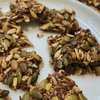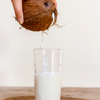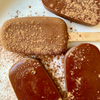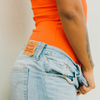WTF? What The... Fibre! (Facts From A Gut Expert)
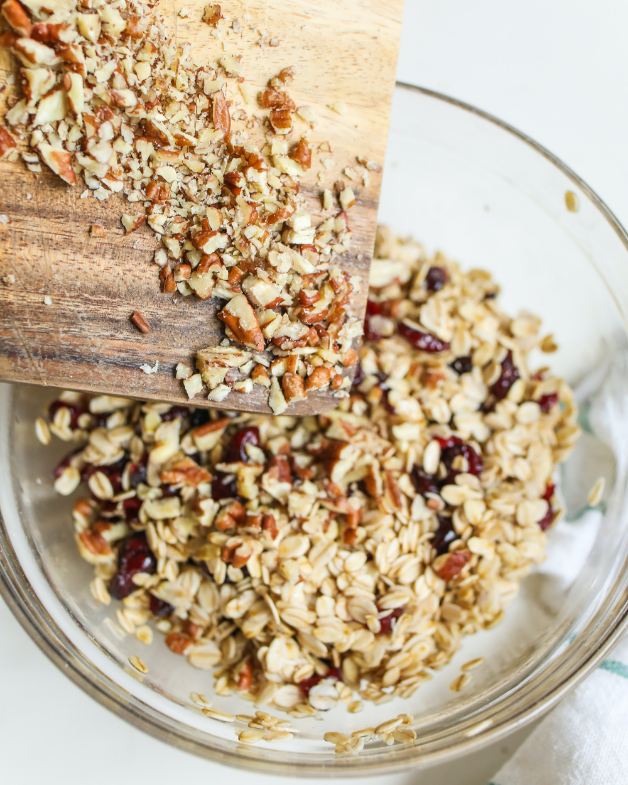
Have you ever thought, ‘WTF?’, when confronted with all the different types of fibre?
Of course, I mean, ‘What The Fibre?!’.
I get it, it’s confusing. And as a Gut Expert, I spend lots of time explaining to clients the differences between fibres and how each contributes to gut health. Whether you’re treating leaky gut, IBS, SIBO or some other digestive issue, it’s essential you know the WTF basics.
Fibre is crucial for the prevention of many chronic diseases (not just gut issues), yet the majority of Australians aren’t meeting their fibre targets (1).
Men: Need approx. 30g of fibre daily
Women: Need approx. 25g of fibre daily (2).
For a topic that’s so important, there seems to be a huge amount of confusion about it. That’s why I’m making it my duty, as a Gut Expert, to give you clarity about the WTF facts. Honestly, it doesn’t matter if you’re reading this and feeling fit and healthy, or if you’re working with a gut specialist to treat leaky gut, IBS or SIBO – this empowering information is useful for every human being on this planet.

Let’s jump in…
Fibre is a term that refers to carbohydrates that are not broken down or absorbed in the upper part of the gastrointestinal tract, such as the small intestine and stomach (3). Dietary fibre is categorised into different types according to sources, solubility (able to be dissolved in water), fermentability and physiological effects (4) including insoluble, soluble, resistant starch (RS) and prebiotic.
I know it sounds complicated, but keep reading as I’m going to break all this down into easier to digest, bite-sized pieces.
1. Soluble fibre
Soluble fibre dissolves in water and forms a thick gel in your digestive tract. This slows gut transit time and helps you feel fuller for longer. This gel also attracts fluid to help soften your stools, making it easier for wastes to move through the bowel. It also creates a colonic environment that supports the growth of beneficial bacteria and influences the absorption of other nutrients that haven’t been absorbed in the small intestine. Soluble fibre also promotes healthy levels of blood sugar and insulin, fat deposition and blood lipids, such as cholesterol (5).- Classification: beta-glucans, gums, wheat dextrins, psyllium, pectin, inulin (6) and oligosaccharides (5).
- Sources: oats, oat bran, barley fruits, vegetables, seed husks, flaxseed, psyllium, dried beans, lentils and peas (7).
2.Insoluble fibre
This comes from plant-based foods, namely the structural parts of plant cell walls. Insoluble fibre does not dissolve in water. Instead, it adds physical bulk to your stools and helps to speed up the removal of waste from your gut, which is great for preventing constipation. Many foods rich in insoluble fibre are also high in FODMAPs*.
- Classification: Cellulose, lignin, some pectins and some hemicelluloses (6)
- Sources: corn, eggplant, green beans, broccoli, spinach, kale, legumes, grapes, kiwi, strawberries, rhubarb, raspberries, pineapple, blueberries, raisins, brown rice, burghal, oat bran, rice bran, buckwheat, quinoa, peanuts, almonds, walnuts pumpkin, chia and sesame seeds (8)
3.Resistant Starch (RS)
RS escapes digestion in the small intestine, moving through to the large intestine where it acts as food for your gut bacteria. They are classified as a prebiotic (bacteria ferments/eats these), which releases beneficial short chain fatty acids that promote a healthy colon. RS is different to FODMAPs* in that it’s fermented slowly in the large intestine. It is the rapid fermentation of FODMAPs* that may cause intestinal gas which, for some, causes symptoms of pain, bloating and discomfort (hello IBS and SIBO). There are four types:- Type 1 is not accessible by digestive enzymes, e.g. partially milled grains and legumes
- Type 2 escapes digestion because of the nature of the food, e.g. underripe bananas
- Type 3 is produced when foods are cooked and then cooled, e.g. potatoes, rice and pasta
- Type 4 is a chemically modified starch (9)
Check out this great video for more information on RS.
4.Prebiotics (including Resistant Starch)
It’s worth noting that all prebiotics are fiber, but NOT all fiber is prebiotic. To classify as a prebiotic the food must:
- Resist gastric acidity, enzymes, and absorption in the upper gastrointestinal tract (i.e., able to reach colon)
- Is fermented by the intestinal microflora
- Selectively stimulate the growth and/or activity of intestinal bacteria that’s potentially associated with health and well-being, such as bifidobacteria and lactobacilli strains.
- Sources: leeks, asparagus, chicory, Jerusalem artichokes, garlic, onions, wheat, oats (6) chickpeas, lentils, red kidney beans, baked beans, soybeans, custard apples, nectarines, white peaches, persimmon, tamarillo, watermelon, rambutan, grapefruit, pomegranate, dried fruit, cashews and pistachios (10)
So, what should you be eating?
A diet that focuses on variety is by far the BEST way to eat all of these types of fibre. If you’re not sure what this looks like, ask yourself if you’re eating the following:
- 5+ serves of vegetables per day (1 serve = 1 cup raw or 1/2 cup cooked)
- 1-2 serves of fruit per day
- Lentils, legumes and pulses on most, if not all, days of the week
- Opting for whole sources of carbohydrates in the form of quinoa, oats and rice, rather than packaged cereals or refined breads
- 1/4-1/3 cup of nuts and/or seeds most days
If you are someone that struggles to tolerate fibre, click HERE for this gut health and life changing information.
*FODMAP is an acronym referring to Fermentable Oligosaccharides, Disaccharides, Monosaccharides and Polyols, complex names for a collection of molecules found in food (11).
And now… you’re officially a WTF expert!
Don’t be disheartened if you’re still gaining clarity though. You may need to re-read this page a few times for everything to sink in. In fact, it’s my recommendation that you read this info multiple times if you are in the midst of treating leaky gut, SIBO, IBS, bloating, gas or some other digestive issue. Knowledge is power, and having some kind of grasp on the WTF facts can help you speed your gut healing journey, so that you can make more informed dietary choices.
Lastly if you just want step-by-step strategy for finding your root cause, comprehensive functional and diagnostic testing, personalised dietary advice, holistic support, effective treatments and sustainable solutions, empowering evidence-based information and a clear action plan, check out Bloated to Body Confident .
-
Posted in
Fibre, FODMAP, Gut Health


